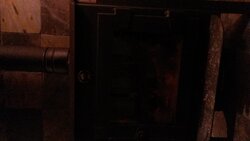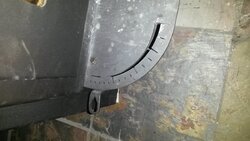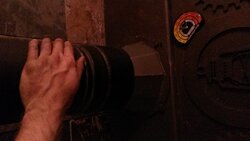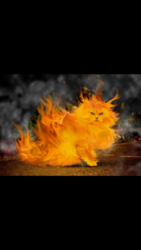My input on this subject can best be communicated by my comments from another forum, mostly in response to JA600L:
-----------------------------------------------------------------------------------------------------------------------------------------------------------------------------------------------------
-----------------------------------------------------------------------------------------------------------------------------------------------------------------------------------------------------
I'm going to make a prediction: A few short years from now we will all look back and make a judgement on hybrid technology. Without some major improvements, hybrid technology will fail to be a real player in the industry and I say that regardless of who makes the stove. There just isn't any significant advantage over other, proven technologies. Will time prove me right or wrong? We shall see.
-----------------------------------------------------------------------------------------------------------------------------------------------------------------------------------------------------
I agree hybrid's are clean burning but no cleaner than other cat stoves currently on the market. In fact, I can think of three cat stoves off the top of my head that are cleaner burning than the Ideal Steel (& will heat a home twice as long on the same wood).
"If we are talking about lower emissions and more total heat staying in your house then yes there is an advantage." If that statement were true, the Ideal Steel, with it's 3.2 cf firebox, would be enjoying legendary real world burn/heat your home times. It is not.
"The advantage is during low burns you get the best technology." I'm pretty sure cat stoves thrive during low burns.
"A high burn rate can overwhelm a cat only stove." Uhh...What?
IMO, there is no advantage to hybrid technology and I think time will prove this.
------------------------------------------------------------------------------------------------------------------------------------------------------------------------------------------------------
Does the EPA require manufacturers to pass different burn rate tests? If not, what's the point? Wouldn't the manufacturers want to focus on passing what the EPA requires?
[/QUOTE].If I were one of their competitors I would try out some of the principles they have used to try to improve my own product line[/QUOTE]
Why in the world would a competitor want to? What's the benefit? If hybrid technology was the benchmark in the industry, I could see your point. The fact is (at least at this time), there just isn't any significant benefit over current technology.
----------------------------------------------------------------------------------------------------------------------------------------------------------------------------------------------------
Uhh...you do realize you are referring to the King model right? "Running low and slow isn't an option for everybody" If you think the King is only for low and slow, there really is no point in this conversation continuing. There are many King owners living in Alaska and Canada that experience far harsher conditions than us that would laugh at your statement.
"Only concerned about long burn times..." No, we are concerned with long burn times that keep our house above 70 f. If keeping a 1250 sf house like ours at 70 degrees in single digit weather for 40+ hours is so easy, then by all means find an Ideal Steel owner with a small house and try it. After you do, I don't think you will be tossing our results out like they're meaningless any longer. Under the exact same conditions, I would guess your Ideal Steel would come in somewhere around 12-14 hours. I realize the King has a bigger firebox but you are making the comparison.
I'm not trying to change your mind either. I really, really, really, really want someone to explain it to me. Yes, your stove is capable of producing lots of heat for 8-10 hours but so are many stoves. Yes, your stove burns cleanly but so do many stoves as well. And that's the point...hybrid technology really isn't capable of doing anything that's not already being done and in the area of burn time, being done much better.
------------------------------------------------------------------------------------------------------------------------------------------------------------------------------------------------------
Ok, I'll take your word for it the Ideal Steel uses the same cat as the Fireview. So, I will try to make my point and this isn't necessarily directed at you.
In this thread, I've talked a lot about a wood stoves heating efficiency (how well it burns, extracts, and delivers heat to the home). My point being that every model stove will have a different heating efficiency even if it were possible to burn the exact same load of wood (others will disagree). Which brings me to my question about cats and the possibility that different sized cats may play a major role in a stove's heating efficiency.
1. The Ideal Steel's cat measures 43.71 cubic inches.
2. The Princess, Ashford, Chinook, and Sirocco's cat measures 84.80 cubic inches (194% larger).
3. The King's cat measures 105 cubic inches (240% larger).
If it is the job of the cat to produce heat (using smoke as fuel), is it safe to assume that a larger cat will have the ability to burn more smoke and thus, produce more heat? I am obviously not an expert on cats but the above figures kind of blow my mind. We aren't talking about 10-20% larger, we are talking approximately 200% larger. I made a claim earlier in this thread that any of the stoves in #2 would heat twice as long as #1 with the same load of wood. Can a correlation be made between my claim and a cat that is nearly 200% larger?
Common sense tells me there must be a positive benefit to using a larger cat. If not, why would a company spend the extra money? Granted, the smaller cat in the Ideal Steel may have something to do with it being a hybrid. Maybe it doesn't need as large of cat since it also has tubes? I really don't know but these are interesting points and I would like to learn more.
My other question was the cost of the cats. Members have made comments that BK's cats cost twice as much and that justifies eliminating them from purchase consideration. The materials used in cats are expensive and a larger cat will obviously cost more to manufacture. If a cat is twice as big, is it unreasonable to ask twice as much?
-------------------------------------------------------------------------------------------------------------------------------------------------------------------------------------------------------
Brian described that burn as a typical winter burn for his Ideal Steel. What you have just stated completely relates to the point I was trying to make about hybrid technology. If that burn was "cat and secondary" as you say and the results were as the graph represents, then there really is no point to hybrid technology in my opinion. And PLEASE understand, I am not trying to argue or down any particular stove. I just do not see the real world benefits. That is why I made the prediction that in a few short years, we will all look back and talk about the failure of hybrid technology (unless there is a major breakthrough).






